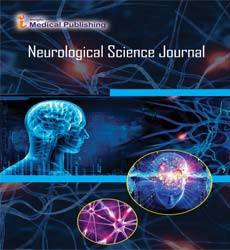The physical exercise in the space fitness lagree massage- rehabilitation - manual techniques
Abstract
The human body has a great capacity for adaptation, even in the case of significant changes in environmental conditions; like prolonged microgravity. The force of gravity on the earth produces an acceleration of 1 g (g is the symbol that indicates the acceleration due to gravity). The term microgravity indicates a reduced force of gravity and is therefore used to describe conditions in which the force of gravity is less than that on the earth's surface (less than one g). For example, the gravity force of the moon is only 17% of that of the earth, or 0.17g. The term microgravity is often used to describe conditions in space, because the body may not always be in conditions of weightlessness, i.e. at 0 g. It is interesting to note that most of the physiological changes due to exposure to microgravity are very similar to those observed in athletes, after a period of inactivity or immobilization, or to changes associated with aging that probably derive from a reduction in physical activity. This similarity is corroborated by the data indicating physical exercise performed during exposure to microgravity as an effective means of counteracting the physiological deterioration that occurs in space. For this reason, but also because exploration in space continues, the influence of microgravity on physical activity is an area of growing interest for sports physiology and exercise specialists. The Space Shuttle spacecraft and on the Orbiting Space Station there is an inversion of the normal posture, that is of the position of the body with respect to the center of gravity, which no longer exists and therefore the mass of blood liquid is redistributed in a different way that on earth. While on Earth gravity retains most of the liquid in the lower limbs, in space, since there is no longer gravity, the liquid collects in the small circle, i.e. at the level of the pulmonary circulation and at the level of the head. Consequences are water retention in the lung and in the face and brain. The adaptation mechanisms ensure that everything works the same, but in the photos this phenomenon is clearly seen in the so-called lunar faces or puffy, roundish and tendentially ruddy face. In short, astronauts live in space as a person who lived upside down on Earth. At the organ level, the sensory system is made out of mind areas, for example, the hippocampus in warm blooded animals or the mushroom groups of the natural product fly. These districts are frequently measured and serve a specific job inside the overall fundamental pathways of the sensory system. For instance, the hippocampus is basic for shaping recollections regarding numerous other cerebral locales. The fringe sensory system likewise contains afferent or efferent nerves, which are heaps of strands that begin from the cerebrum and spinal string, or from tactile or engine kinds of fringe ganglia, and branch over and again to innervate all aspects of the body. Nerves are made essentially of the axons or dendrites of neurons (axons if there should be an occurrence of efferent engine filaments, and dendrites in the event of afferent tactile strands of the nerves), alongside an assortment of films that fold over and isolate them into nerve fascicles. The vertebrate sensory system is partitioned into the focal and fringe sensory systems. The focal sensory system (CNS) comprises of the mind, retina, and spinal line, while the fringe sensory system (PNS) is comprised of the multitude of nerves and ganglia (bundles of fringe neurons) outside of the CNS that interface it to the remainder of the body. The PNS is additionally partitioned into the physical and autonomic sensory systems. The physical sensory system is comprised of "afferent" neurons, which bring tangible data from the substantial (body) receptors to the CNS, and "efferent" neurons, which do engine guidelines to the intentional muscles of the body. The autonomic sensory system can work with or without the control of the CNS (that is the reason it's called 'independent'), and furthermore has two regions, called parasympathetic, which are significant for sending orders to the body's essential inward organs, along these lines controlling capacities like heartbeat, breathing, assimilation, and salivation. Autonomic nerves, in contrast to physical nerves, contain just efferent strands. Tangible signs coming from the viscera course into the CNS through the physical tactile nerves (e.g., instinctive agony), or through some specific cranial nerves (e.g., chemo sensitive or repairman signals).
Open Access Journals
- Aquaculture & Veterinary Science
- Chemistry & Chemical Sciences
- Clinical Sciences
- Engineering
- General Science
- Genetics & Molecular Biology
- Health Care & Nursing
- Immunology & Microbiology
- Materials Science
- Mathematics & Physics
- Medical Sciences
- Neurology & Psychiatry
- Oncology & Cancer Science
- Pharmaceutical Sciences
